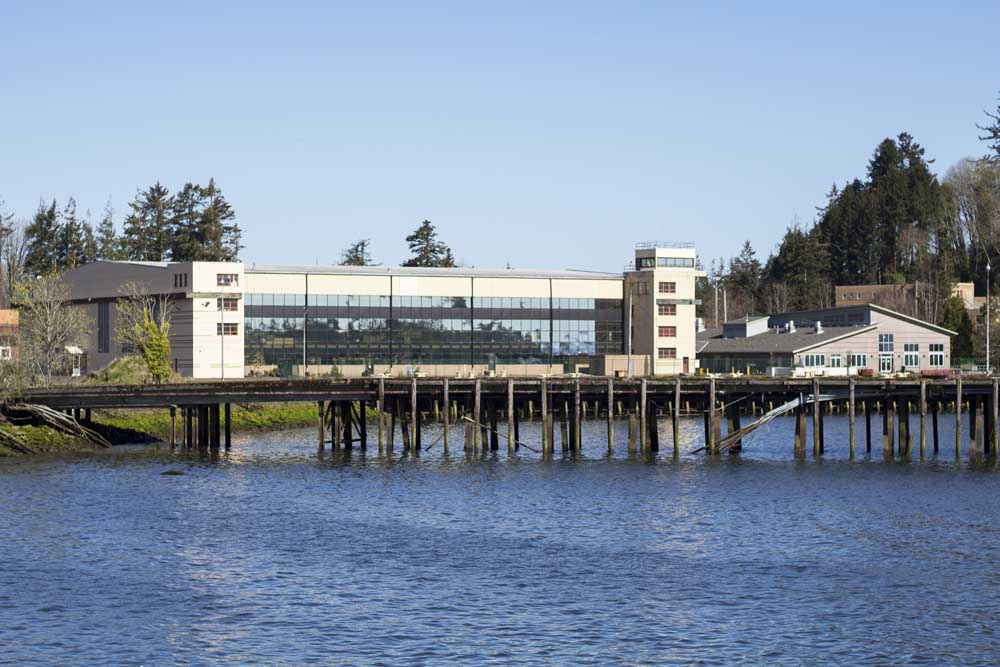Cannon Beach leaders explore natural history park idea
Published 5:00 pm Tuesday, October 14, 2008
CANNON BEACH – The landscape in and around Cannon Beach could become part of a “natural history park” if a proposed plan is adopted by the City Council.
Proposed by an ad hoc committee of representatives from local environmental groups, state parks and the state Fish and Wildlife Service, the concept would incorporate the ocean, beach, forest, Ecola Creek watershed and Ecola State Park into a comprehensive “natural area parks” plan. The plan would guide the city for long-term conservation of those areas and emphasize their importance to the public, said Jason Seivers.
Seivers, a member of the Ecola Creek Awareness Project and field trip program manager for the Nature Conservancy, proposed the plan to the City Council at a work session Tuesday night. He said it could take six months to a year to develop the plan, which would eventually go to the City Council for approval.
Five key principles would guide the plan. They include creating “core” areas that would be incorporated into the natural history park, such as Ecola State Park and Tillamook Head, Haystack Rock, the wetlands downtown and east of US 101, Haystack Hill Park and the proposed 800-acre Ecola Forest Reserve in the city’s watershed.
The principles also would include recreation and education elements, conservation management and recognition of the role the Ecola area played throughout history in inspiring arts and culture, as well as its importance to local Indian tribes. Seivers said the ad hoc committee envisions trails and signs throughout the “natural history park,” including in the wetlands along Spruce Street and through the forest surrounding the watershed.
Because the word “Ecola” means “whale” in the Chinook language, Seivers said the ad hoc committee proposes that the park’s theme be “landscape of the whale.” In addition to using the theme for the park, local arts groups could explore the theme in art shows, such as the annual Sculptures Without Walls competition and in local publications, he said.
“The idea becomes infused in the psyche,” Seivers said. “It becomes powerful. It recognizes how powerful the landscape is in the fabric of the community.”
Seivers displayed a map of the proposed “Greater Ecola Area,” showing an aerial view of the downtown core and Ecola Creek to the north. An outline of a whale was drawn around the core area. The whale’s “spout” or spray, are the streams that radiate from the core and into the city’s watershed east of US 101, he said.
The plan would augment a “vision statement” already contained in the city’s comprehensive land-use plan that calls for fostering a “community with a strong sense of place. …” and protection of the “surrounding natural environment as defined by the ocean and its beach, the Ecola Creek estuary and surrounding forested hillsides.”
“My sense is that a plan articulates the city’s wishes. It takes the vision statement and puts meat on the bones,” Seivers said.
The proposed plan also would enable the city to work with other jurisdictions, including the state parks department, to achieve goals outside of the city, such as developing a trail to Angora Peak south of Cannon Beach.
Although the City Council generally agreed with the concept, Councilor Sam Steidel worried that it might have few “teeth” to prevent outside jurisdictions from encroaching on the surrounding environment. What influence would the city have, Steidel asked, if the state parks department proposed a concession stand at Ecola State Park? Seivers replied that without the plan it would be “harder for the city to have the conversation.”
Steidel also said he was bothered by the word “plan.”
“It connotes an end point, but this is ongoing,” Steidel said. “It will be constantly in flux. But the concept I really like.”
The other council members said they liked the idea. Mayor Jay Raskin and Councilor Melissa Cadwallader noted that the collaborative approach to conserving the watershed would be attractive to grant-making organizations that the city might approach for wetlands restoration projects and forest acquisition.
“It speaks nothing but positive,” Cadwallader said.
In other business, the council agreed to require that everyone using the city’s skate park wear helmets. State law requires helmets be worn by people 15 years old and younger but allows cities to create their own rules. Alcohol, tobacco, drugs and glass containers will be banned from the park and from the adjacent basketball court.
Police Chief Gene Halliburton said that, since the new skate park opened this summer, four incidents occurred between June and August, including an injury requiring medical attention, criminal mischief, graffiti and a skateboard impoundment. In comparison, only one incident a year occurred at the old skate park in 2007 and 2006, and two incidents occurred in 2005. Citizen complaints also are up this year, mostly centering on the lack of helmets worn by children and adults, alcohol usage and graffiti, Halliburton said. Police have stepped up monitoring the area.





